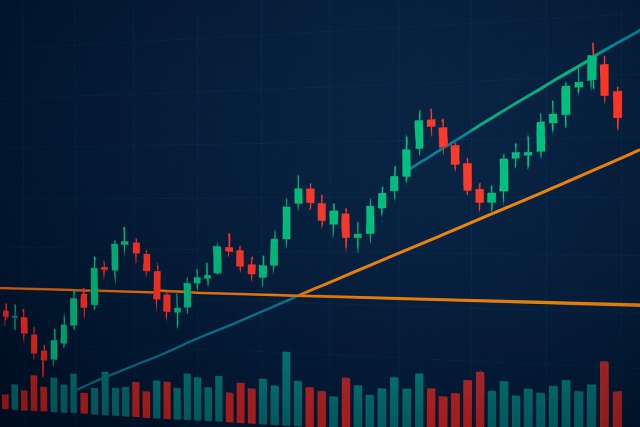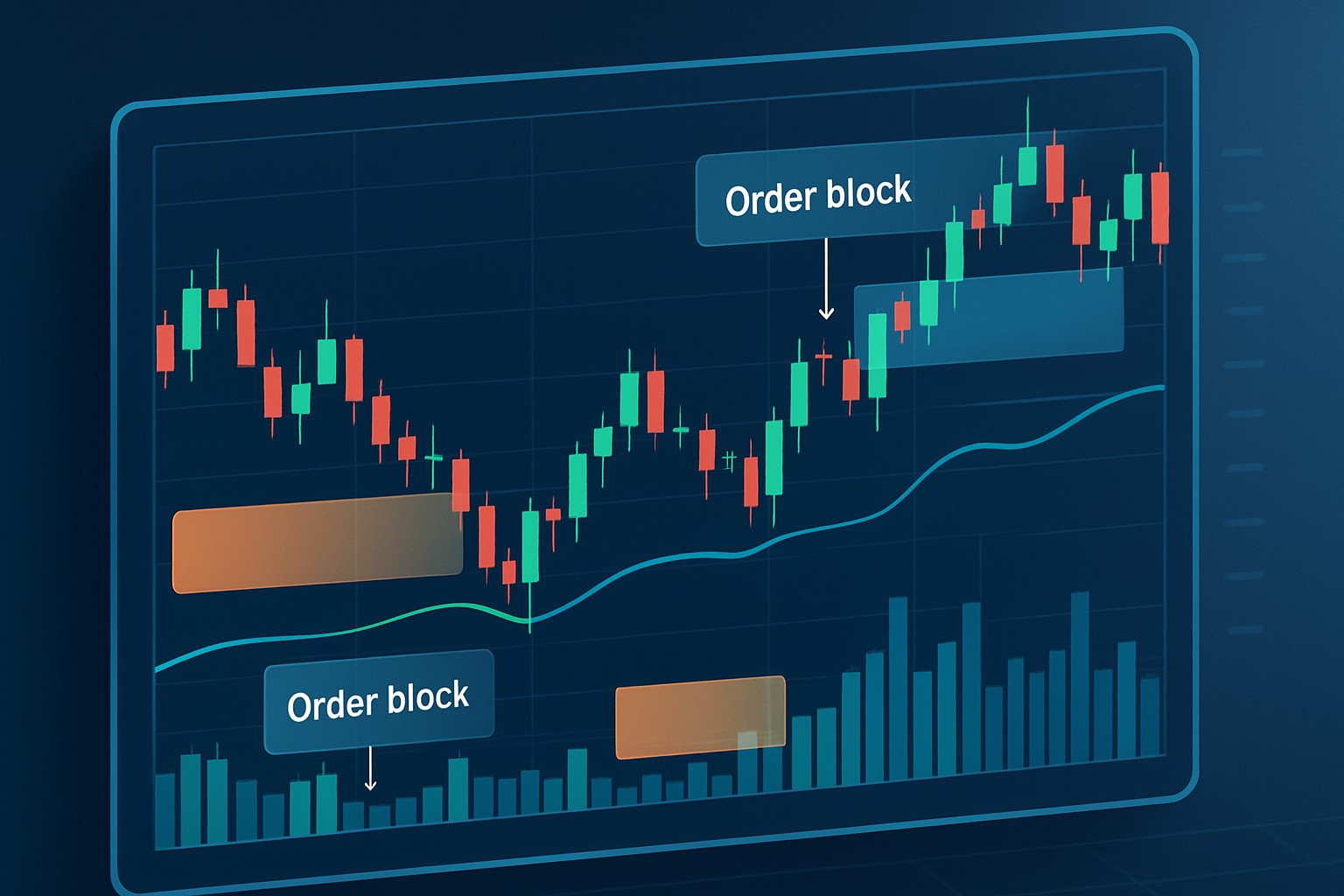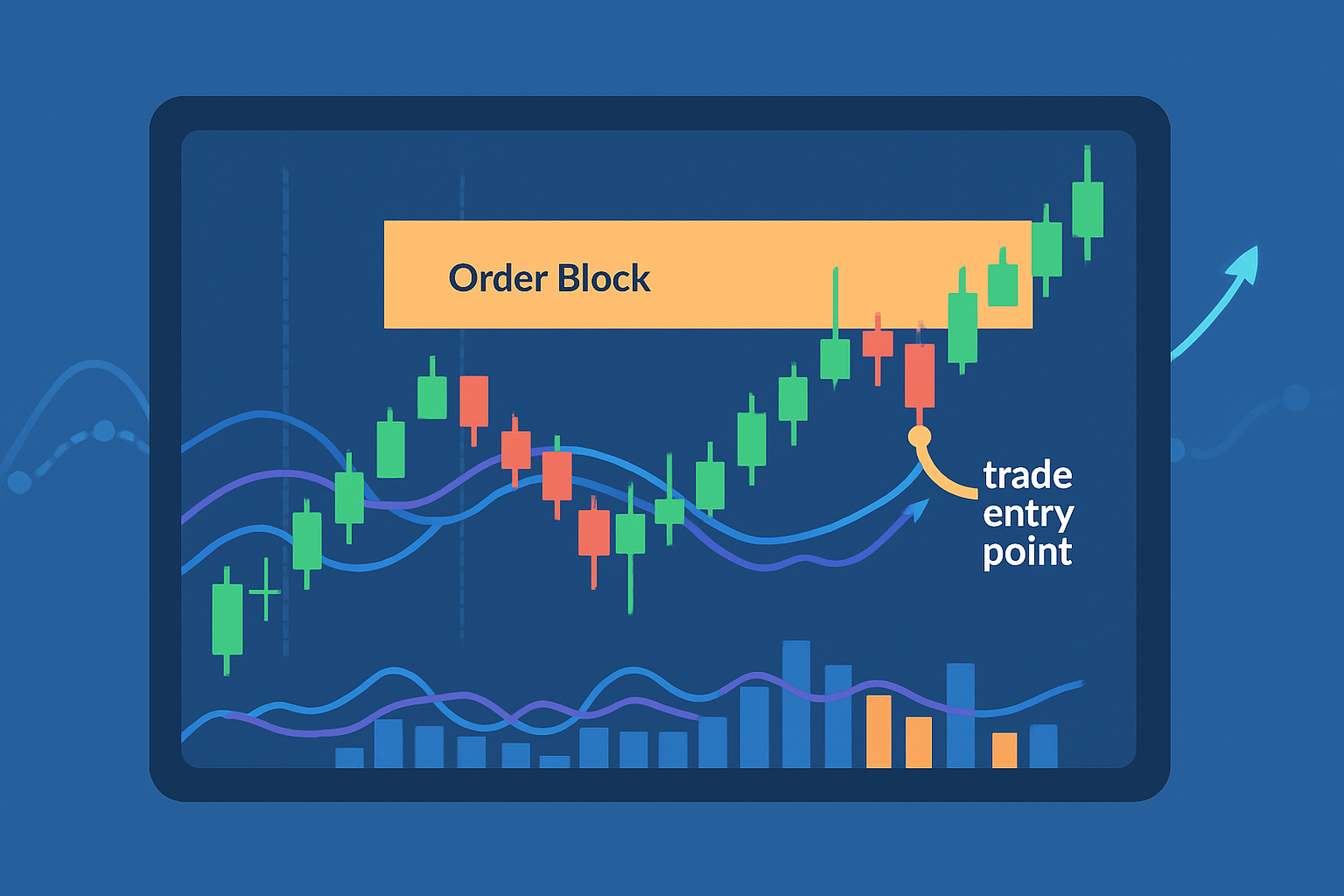
What Is a Trend Line in Technical Analysis?
Trend lines are essential tools in technical analysis that help traders identify market direction an...

Order block trading is a technique many seasoned traders swear by when it comes to pinpointing golden high-probability zones created by big institutional players. It might look intimidating but this article breaks it down into clear no-nonsense language.
Order blocks are essentially specific price zones on a chart where those big institutional traders have placed hefty buy or sell orders. Think of these blocks as breadcrumbs dropped by the heavy hitters, pinpointing spots of intense buying or selling action that often nudge the price in one direction or another.
Order blocks give traders a clearer picture of where the big players are really making moves, making it a whole lot easier to pinpoint potential reversal or continuation zones in the market.
"Order blocks sort of behave like traffic jams on a bustling highway. Big institutional orders often throw a wrench in the price action, slowing things down or even causing a U-turn, much like when cars start braking hard before a bottleneck. It’s a handy way for traders to figure out where the market might take a breather or make a sharp turn, helping them time their moves a bit more like a pro."
Spotting order blocks is about tuning into clear price action signals. Think strong candles that show decisiveness, patches where price takes a breather before a big move, and wicks that hint at rejection of certain levels.
Keep an eye out for those sharp price moves that clearly show strong buying or selling activity. These moments often tell a bigger story.
Spot the last candle that goes against the trend right before the price makes its jump or drop. This little guy is what actually forms the order block.
Mark the high and low of that candle to outline the boundaries of the order block area. Think of it as drawing the frame on a picture.
Look for higher volume or noticeable price reactions when the price swings back to this zone because that’s your green light confirming the zone’s importance.
Check if this zone lines up well with other technical clues like moving averages or trendlines since this kind of alignment usually boosts your confidence in the order block’s power.
For those dipping their toes into trading, working with order blocks often means patiently waiting for the price to mosey its way into these key zones. Then, you keep an eye out for signals that tip you off it’s the right moment to jump into a trade.
Imagine spotting a bullish order block on a 4-hour chart—like catching the faint scent of something promising on the horizon. You hang tight and wait for the price to cozy up to that area again. Then bam, a strong rejection candle shows up waving a flag that a bounce might be just around the corner. Once you jump into the trade, you tuck your stop loss just below the block and aim your sights at the next resistance level while keeping your risk in check.

Price chart illustrating an identified bullish order block with a rejection candle and marked trade entry and stop loss levels
Many new traders often jump the gun and confuse order blocks with foolproof signals or lump them together with basic support and resistance levels. Order blocks really shine only when you give them some context and a bit of confirmation.
Developing skill in order block trading usually takes a fair bit of time and a healthy dose of patience. New traders often find it helpful to keep detailed trade journals and regularly review charts to sharpen their pattern recognition. It’s like training your brain to spot the subtle hints the market throws your way. Trying out strategies on demo accounts without risking real money is also a smart move because nobody wants to learn the hard way.
Struggling to improve your trading performance? Edgewonk's advanced analytics tools are designed to give you the edge you need.
With detailed trade journaling, robust strategy analysis, and psychological insights, you'll gain a comprehensive understanding of your strengths and weaknesses. Don't miss out on this game-changing opportunity.
Traders, it's time to elevate your game. Edgewonk is the ultimate trading journal software designed to empower you with data-driven insights and personalized strategies. Take control of your trading journey and maximize your potential.
20 articles published
Transforming the field of forex trading through his systematic approach to currency pair analysis, he focuses on macroeconomic indicators and central bank policy impacts.
Read Posts
Trend lines are essential tools in technical analysis that help traders identify market direction an...

Learn how the True Range indicator captures market volatility and price swings, empowering traders t...

Master the momentum indicator to gauge price speed and trend strength. This ultimate guide covers ca...

Hidden bullish divergence is a key technical indicator revealing strong buying pressure beneath unce...
